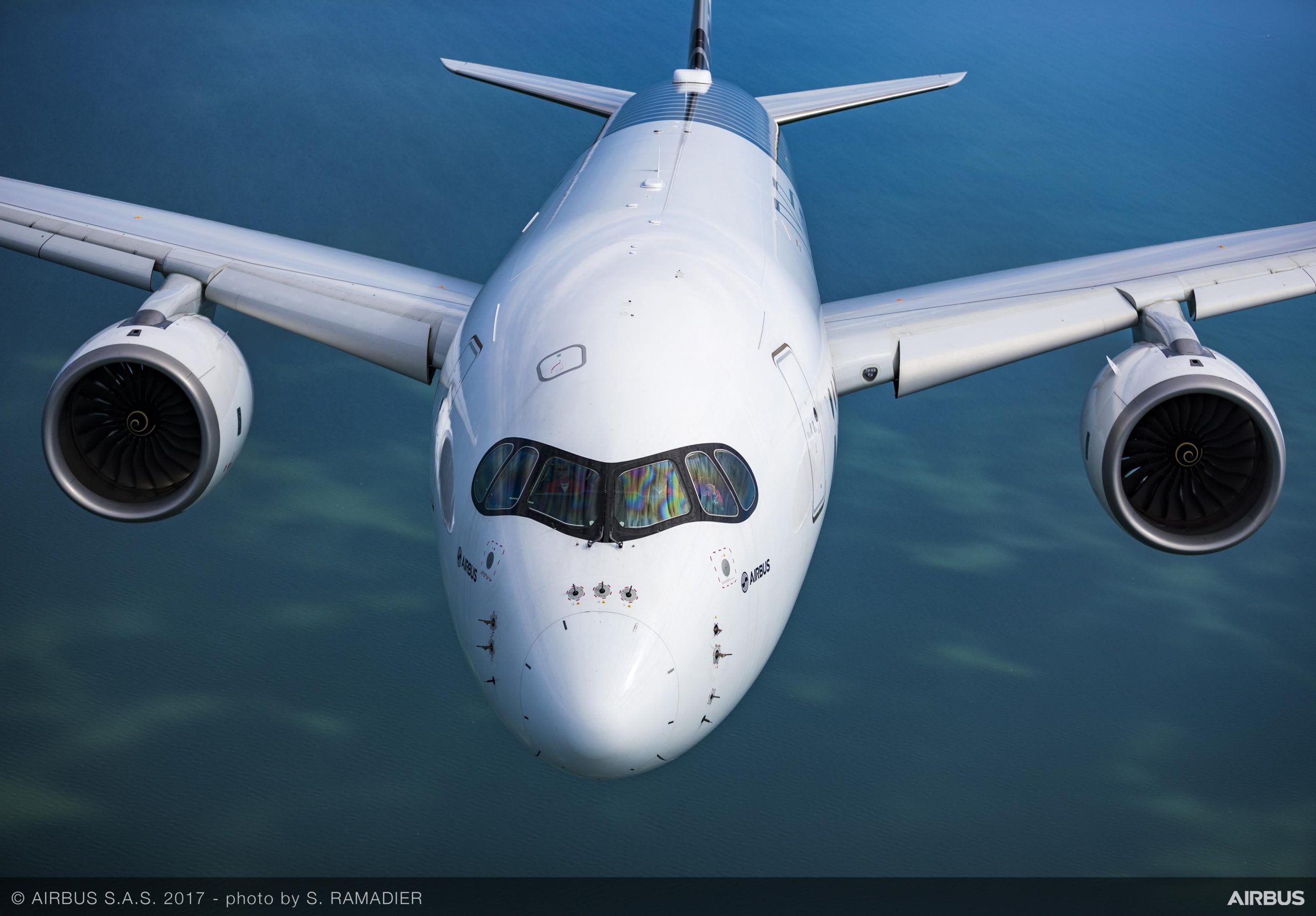
A350 XWB in flight 02 scaled
It’s not a repeat of the Trent 1000 issues, Rolls-Royce stresses, but now its XWB-84 too needs extra inspections and parts replacement because of high wear of Intermediate Pressure Compressor (IPC) blades. Europe’s EASA is about to release an Airworthiness Directive, Rolls says in an August 11 release. Higher than expected wear has been found on high-life XWB-84s, the exclusive powerplant on the Airbus A350-900. Engines that have been in service since 2015-2016 and clocked an average of 14 million kilometres have developed wear on one or two IPC-blades. Non of the engines had developed abnormal in-flight operation.
A Rolls-Royce spokesperson tells Airinsight the issue has affected only a limited number of engines: “We have inspected just over 100 engines, and approximately one fifth have shown signs of wear, on 1 or 2 blades in the Intermediate Pressure Compressor.”
The cause is still under investigation, so it is too early to tell if the parts will need a redesign: “The immediate solution will be replacing worn blades with new blades of the existing design; as we understand the root cause better, we will look at a long-term fix.” Rolls-Royce doesn’t expect the issue to have a signifiant effect on aircraft operations/aircraft on ground, not on material annual costs additional to those already expected.
The wear issue reminds us of that on the Trent 1000 and 1000 TEN, for which a redesign of the IPC, Intermediate Pressure Turbine (IPT), and High Pressure Turbine (HPT) has been done since significant issues arose first in 2015. Recently, Rolls said it is on top of the issues now, as affected parts have been replaced on most engines and aircraft on ground have fallen to dingle-digit numbers. Only the redesign of the HPT on the TEN needs to be completed and certified. The issues has cost Rolls-Royce hundreds of millions in R&D costs as well as compensation to airlines for their grounded Boeing 787s.
The spokesperson says the XWB-issue is very difficult to that of the Trent 1000: “This issue is not comparable with the Trent 1000 for a number of reasons. These are high-life engines that have been in service four to five years, whereas for the Trent 1000, at some points there were inspection regimes as low as 300 cycles at one point for some Pack C engines before a fix was created. There is less need for unplanned maintenance visits, because these engines are approaching their first shop visit at which the work can be done; plus we have good availability of parts, MRO capacity and spare engines.”
Rolls says in late 2018, “we checked the Trent XWB-84 design against our IPC criteria, which were updated following the lessons learned from the Trent 1000 IPC. We found that the Trent XWB-84 IPC met these criteria in full.”
Views: 7



